Standing in the produce aisle, faced with dozens of apple varieties, you’ve likely wondered: Which apple should I choose for my recipe? The difference between a soggy pie and a perfectly textured dessert often comes down to selecting the right apple variety. At AppleRecipes.us, we’ve tested countless combinations through years of recipe development, and we’re here to demystify apple selection once and for all.
What makes an apple perfect for baking versus snacking comes down to three key factors: flavor profile (sweet, tart, or balanced), texture (firm, crisp, or soft), and cooking behavior (holds shape or breaks down). Understanding these characteristics transforms you from a guessing cook into a confident baker who knows exactly which apple will deliver the results you want.
Ready to become an apple selection expert? Explore more apple recipe inspiration on The Ultimate Guide to Baking with Apples.
Understanding Apple Characteristics: The Foundation for Flavor & Texture
Flavor Profiles: Sweet, Tart, and Everything In Between
Apple varieties span a remarkable flavor spectrum, from intensely tart varieties that make your mouth pucker to honey-sweet apples that taste like natural candy. Tart apples like Granny Smith offer bright acidity with subtle green notes, making them ideal for balancing rich, sweet preparations. Sweet apples such as Fuji and Gala provide natural sweetness with hints of honey or vanilla, perfect for snacking or recipes where you want to reduce added sugar.
The magic happens with balanced apples like Honeycrisp, which combine sweetness with just enough tartness to create complexity. These varieties work beautifully in mixed preparations where you want depth of flavor without overwhelming sweetness or sourness.
Quick Tip: Taste-test your apples before baking – even within the same variety, individual apples can vary in sweetness depending on growing conditions and ripeness.
Texture and Firmness: Holding Shape vs. Melting Away
Apple texture determines how your fruit will behave during cooking, making it crucial for recipe success. Firm, dense apples like Granny Smith and Pink Lady maintain their structure when heated, creating distinct pieces in pies and tarts. Their cellular walls resist breaking down, ensuring you get tender but intact apple pieces rather than mush.
Crisp apples such as Honeycrisp and Fuji offer the perfect middle ground – they soften during cooking while retaining some texture. Soft apples like McIntosh break down easily when cooked, making them ideal for applesauce, smooth fillings, or recipes where you want the apple to virtually disappear into the final product.
Consider the desired final texture when choosing: Do you want distinct apple pieces or a smooth, integrated flavor?
The Science of Cooking Apples: Pectin, Acidity, and What It Means
The secret to understanding how apples cook lies in pectin content and acidity levels. Pectin, a natural substance in apple cell walls, acts like glue holding the fruit’s structure together. High-pectin apples resist breaking down during cooking, while low-pectin varieties become tender and sauce-like more quickly.
Acidity also plays a crucial role – it helps preserve pectin structure and prevents excessive browning during cooking. This is why tart apples often hold their shape better than very sweet varieties. Understanding this science helps you predict how any apple variety will behave in your recipes.
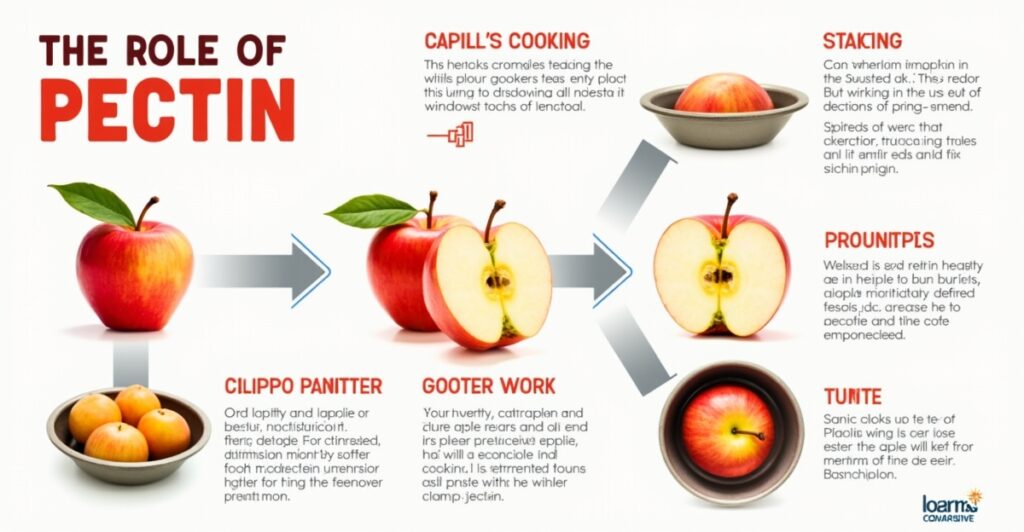
Best Apples for Every Culinary Creation
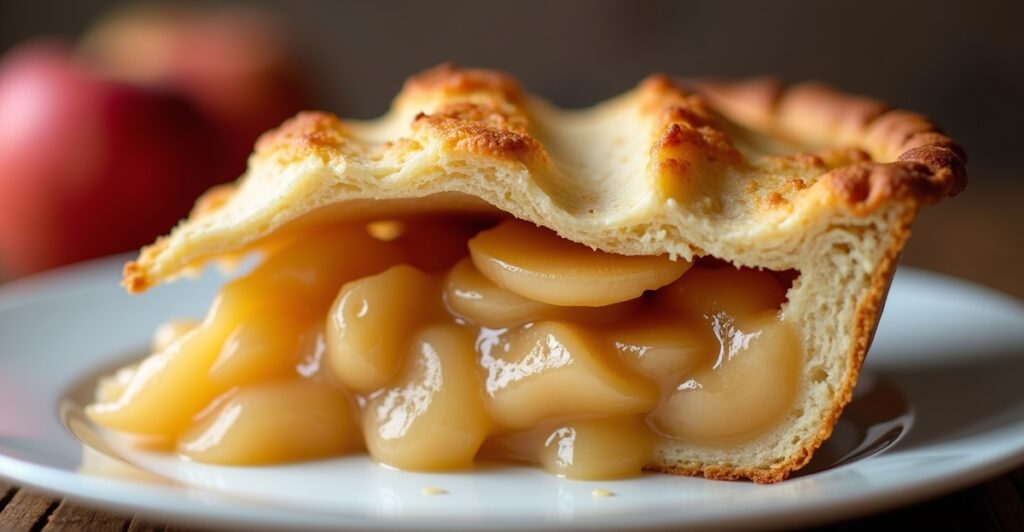
For Perfect Pies & Tarts: Apples That Hold Their Shape
The foundation of an exceptional apple pie lies in choosing varieties that maintain their integrity during long baking times. Granny Smith apples reign supreme here, offering bright tartness that balances sweet pie fillings while holding firm texture. Their high acidity and dense flesh prevent the dreaded mushy pie syndrome.
Northern Spy and Newtown Pippin are baker’s secrets – these heritage varieties maintain excellent texture and provide complex flavor profiles that elevate any pie. For a more accessible option, Honeycrisp offers reliability with its balanced flavor and good structure retention.
Baker’s Note: Consider blending varieties like Granny Smith for tartness and Honeycrisp for sweetness and texture in your pie for the most complex, satisfying results.
The key is avoiding apples that cook down too quickly, such as Red Delicious or McIntosh, which can turn your carefully crafted pie into applesauce between crusts.
Recommended for pies and tarts:
- Granny Smith (excellent shape retention, bright flavor)
- Northern Spy (complex flavor, firm texture)
- Honeycrisp (balanced sweetness, reliable structure)
- Pink Lady (tart-sweet balance, holds shape well)
Learn more about apple selection in our Granny Smith vs Honeycrisp: Ultimate Showdown for Apple Pie and discover The Top 5 Apples That Won’t Turn to Mush When Baked. For broader techniques, explore Mastering Classic Apple Desserts.
For Crisps, Crumbles & Cobblers: Flavorful & Tender
Crisps and crumbles are more forgiving than pies, allowing you to use apples that soften beautifully during baking. Jonagold and Braeburn excel here, offering complex flavors that intensify when cooked while maintaining enough structure to create satisfying texture contrast with crispy toppings.
Cortland apples resist browning and break down to just the right consistency for crisps, while Empire apples provide a lovely balance of sweet and tart that doesn’t require additional sugar adjustments.
The beauty of these desserts lies in embracing apples that become tender and jammy, creating that perfect contrast between soft, spiced fruit and crunchy topping. Even slightly overripe apples work wonderfully in these preparations.
Top choices for crisps and crumbles:
- Jonagold (complex flavor, perfect tenderness)
- Braeburn (spicy-sweet notes, good texture)
- Cortland (slow browning, ideal breakdown)
- Empire (balanced flavor, reliable results)
Perfect your technique with How to Make Perfect Apple Crisp with a Crunchy Oat Topping and see our Baker’s Ranking of Apples: Best to Worst for Crisps & Crumbles.
For Applesauce & Smooth Fillings: Easy Cooking, Sweet Results
When you want apples to completely break down into smooth, silky preparations, choose varieties with softer flesh and lower pectin content. McIntosh apples are the gold standard for applesauce, cooking down quickly into a naturally smooth puree with minimal effort.
Cortland and Empire also excel in sauce-making, offering good flavor while breaking down easily. These varieties require less cooking time and often need minimal added sweetener due to their natural sugar content.
For the smoothest results, avoid high-pectin varieties like Granny Smith, which require extensive cooking and often result in chunky rather than smooth sauces.
For Snacking & Salads: Crispness & Fresh Flavor
Raw apple applications demand varieties that deliver satisfying crunch and appealing flavor without cooking. Honeycrisp leads this category with its explosive crispness and balanced sweet-tart flavor that appeals to all ages. The cells in Honeycrisp apples are larger than most varieties, creating that signature crunch.
Fuji apples offer exceptional sweetness with floral notes and maintain their crisp texture longer after cutting. Gala apples provide mild, sweet flavor perfect for children and those who prefer less assertive apple taste.
Pink Lady brings bright tartness that wakes up green salads, while Braeburn offers complex flavor with hints of spice that complement both sweet and savory salad preparations.
Pro-Tip: A quick dip in lemon water helps prevent browning in apple salads, keeping them appealing and fresh-looking for hours!
Best for fresh eating and salads:
- Honeycrisp (superior crunch, balanced flavor)
- Fuji (exceptional sweetness, long-lasting crispness)
- Gala (mild, approachable flavor)
- Pink Lady (bright tartness, firm texture)
Discover delicious combinations in Crisp and Refreshing Apple Salads and learn why Gala Apples are Perfect for Kid-Friendly Snacks and Mild Cakes.
Bridging to Savory Dishes: Sweet-Tart Companions
Apples excel in savory applications where their natural sweetness balances rich, salty, or spicy elements. Granny Smith and Pink Lady work beautifully with pork, their tartness cutting through fatty richness while adding fruity complexity.
Braeburn and Jonagold offer more complex flavor profiles that enhance roasted vegetables and grain-based salads. Their balanced sweet-tart nature complements herbs and spices without overwhelming savory elements.
The key to savory success lies in choosing apples with enough acidity to provide contrast while maintaining good texture when cooked. Explore these combinations in Pork and Apple: A Perfect Culinary Match.
Popular Apple Varieties In-Depth: A Closer Look
Honeycrisp Apples
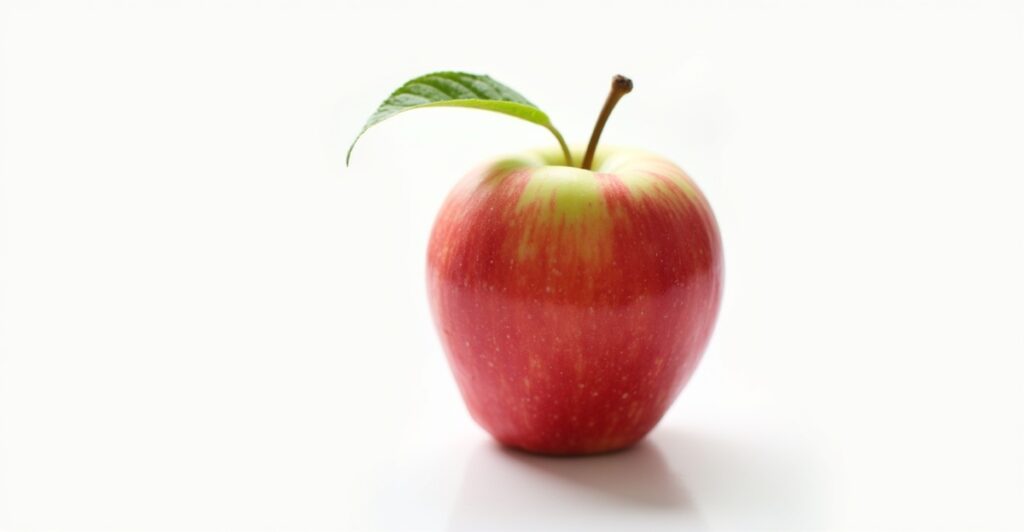
Developed in Minnesota and released in 1991, Honeycrisp revolutionized the apple world with its extraordinary texture and balanced flavor. The flesh features unusually large cells that create an explosive crunch when bitten, followed by a burst of sweet juice with subtle tart undertones.
Appearance: Medium to large size with red striping over yellow-green background
Flavor: Sweet with mild tartness, honey-like notes
Texture: Exceptionally crisp and juicy
Best Uses: Fresh eating, salads, pies (mixed with tarter varieties), light baking
Storage: Keeps well refrigerated for 2-3 months
Honeycrisp performs admirably in most applications but truly shines when eaten fresh or used in recipes where its texture can be appreciated. Try it in our Apple Matcha Crumble Cake with White Chocolate Glaze.
Fuji Apples
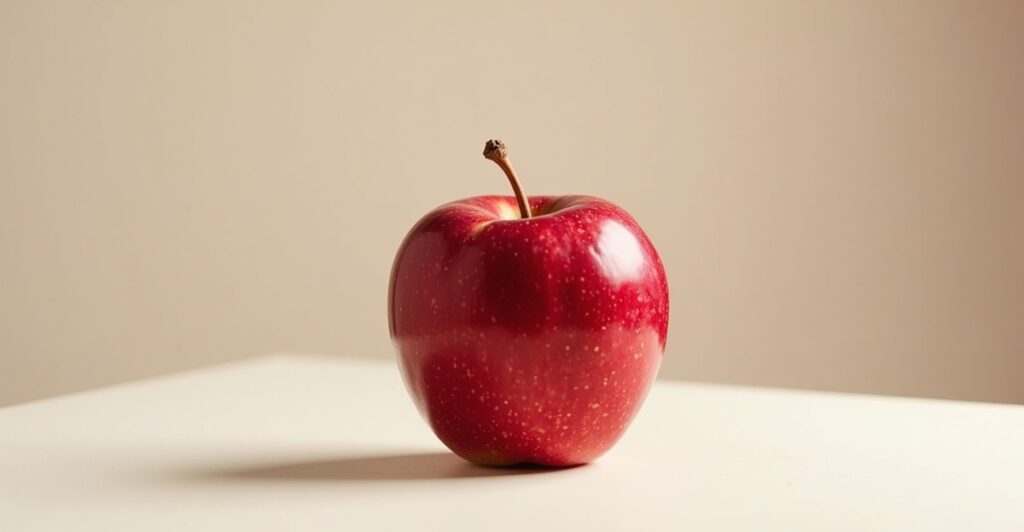
Originating in Japan through crossbreeding Red Delicious and Ralls Janet varieties, Fuji apples have become beloved worldwide for their exceptional sweetness and keeping quality. They’re among the sweetest apple varieties available commercially.
Appearance: Medium to large, pink-red blush over yellow background
Flavor: Very sweet with floral notes, minimal tartness
Texture: Dense, crisp, and very juicy
Best Uses: Fresh eating, fruit salads, light baking where sweetness is desired
Storage: Excellent keeping quality, stores well for 4-5 months refrigerated
Fuji’s natural sweetness makes it perfect for recipes where you want to reduce added sugar. Experience its elegance in Salted Caramel Apple Tart with Thyme.
Gala Apples
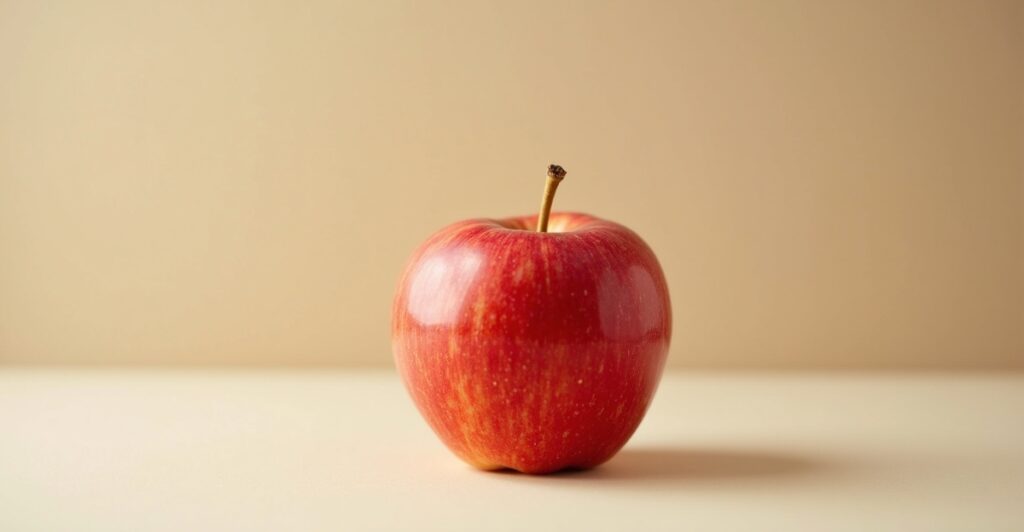
Developed in New Zealand, Gala apples have become one of the most popular varieties worldwide due to their mild, approachable flavor and reliable availability. They’re particularly beloved by children and those new to apple eating.
Appearance: Small to medium, orange-red striping over yellow background
Flavor: Mildly sweet with subtle vanilla notes
Texture: Crisp when fresh, moderately juicy
Best Uses: Fresh eating, lunch boxes, mild baking applications, fruit salads
Storage: Good storage life, 2-3 months refrigerated
Gala’s gentle flavor makes it versatile for both eating and baking where you don’t want aggressive apple taste. Perfect for families, as detailed in Gala Apples: Perfect for Kid-Friendly Snacks and Mild Cakes.
Pink Lady (Cripps Pink) Apples
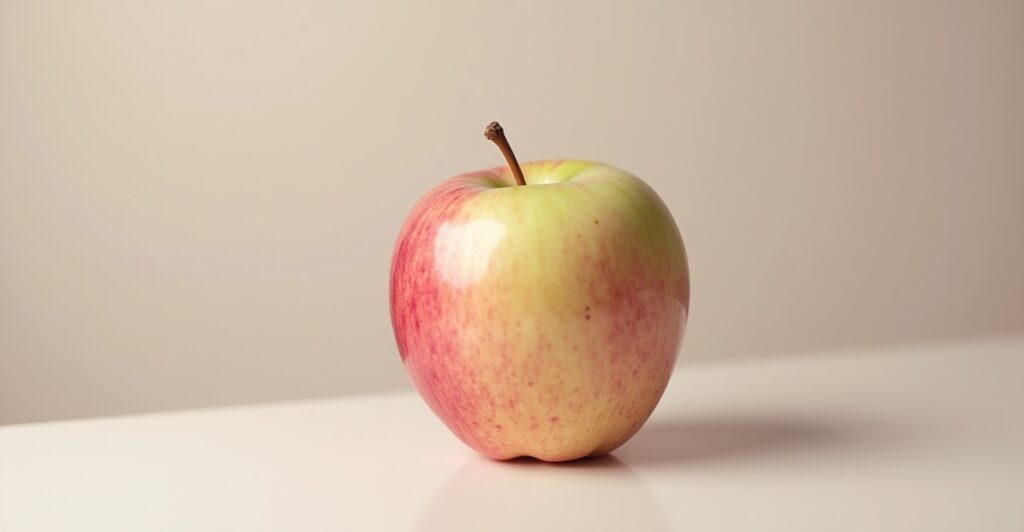
Developed in Australia, Pink Lady apples require specific growing conditions and longer growing seasons, making them a premium variety. Their distinctive tart-sweet balance and firm texture make them favorites among serious bakers.
Appearance: Medium size, bright pink blush over green-yellow background
Flavor: Tart with sweet finish, wine-like complexity
Texture: Very firm, crisp, moderately juicy
Best Uses: Fresh eating, baking, salads, cooking applications requiring firm texture
Storage: Excellent storage, keeps 4-5 months refrigerated
Pink Lady’s firm texture and complex flavor make it excellent for sophisticated preparations. Try it in How to Infuse Cream with Earl Grey for London Fog Apple Galette.
Granny Smith Apples
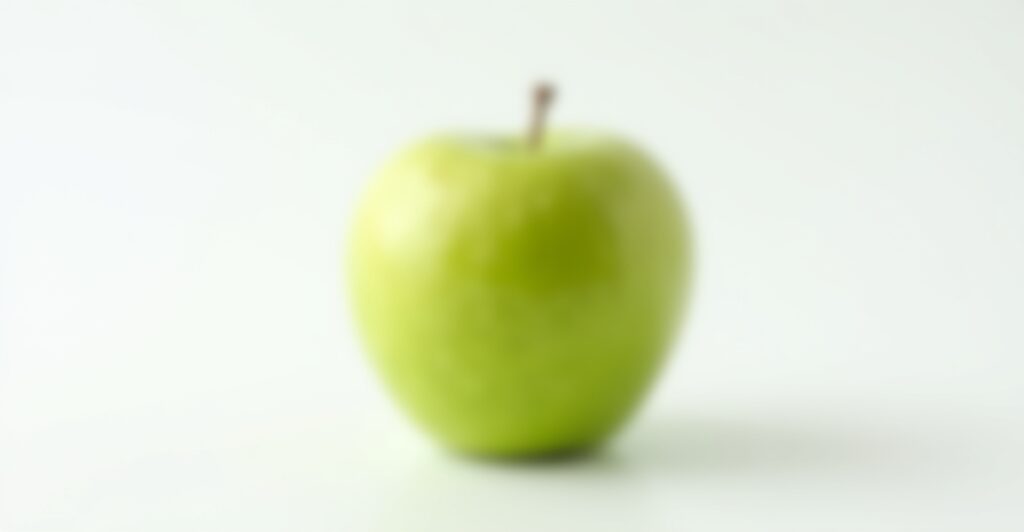
The quintessential baking apple, Granny Smith originated in Australia and has become the gold standard for pie-making worldwide. Its intense tartness and exceptional structure retention during cooking make it indispensable in serious baking.
Appearance: Medium to large, bright green with occasional pink blush
Flavor: Intensely tart with green, slightly astringent notes
Texture: Very firm, crisp, moderately juicy
Best Uses: Baking (especially pies), cooking, applesauce (when tartness is desired), salads for contrast
Storage: Excellent keeper, stores 4-6 months refrigerated
Granny Smith’s reliability in baking applications makes it a kitchen staple. Compare its performance in Granny Smith vs Honeycrisp: Ultimate Showdown for Apple Pie.
Golden Delicious Apples
Despite the name similarity, Golden Delicious bears no relation to Red Delicious and offers far superior flavor and texture. This variety provides reliable sweetness with enough acidity to prevent cloying taste, making it versatile for both eating and cooking.
Appearance: Medium to large, golden yellow with possible pink blush
Flavor: Sweet with mild tartness, honey and spice notes
Texture: Tender but firm, juicy
Best Uses: All-purpose variety, good for eating, baking, cooking, applesauce
Storage: Good storage life, 3-4 months refrigerated
Golden Delicious serves as an excellent all-purpose apple when you need reliable results across multiple applications.
McIntosh Apples
A heritage variety beloved in New England and copyright of the apple industry, McIntosh offers distinctive flavor and texture that works beautifully in specific applications, particularly those requiring apples that break down during cooking.
Appearance: Medium size, red with green undertones, often with white flesh showing through skin
Flavor: Sweet-tart with wine-like complexity, aromatic
Texture: Tender, can be mealy when overripe
Best Uses: Applesauce, juice, eating when perfectly ripe, light baking
Storage: Shorter storage life, best used within 1-2 months
McIntosh requires careful selection for optimal eating but excels in preparations where its unique flavor and easy-cooking properties are assets.
Comparison Table of Popular Apple Varieties
| Apple Name | Flavor | Texture | Best For | Notes |
|---|---|---|---|---|
| Honeycrisp | Sweet with mild tartness | Exceptionally crisp | Fresh eating, light baking | Superior crunch, stores well |
| Fuji | Very sweet, floral | Dense, crisp | Fresh eating, reduced-sugar recipes | Excellent keeper |
| Gala | Mildly sweet | Crisp when fresh | Snacking, kid-friendly recipes | Approachable flavor |
| Pink Lady | Tart-sweet, complex | Very firm | Baking, sophisticated preparations | Premium variety |
| Granny Smith | Intensely tart | Very firm | Pie baking, cooking | Gold standard for pies |
| Golden Delicious | Sweet with mild tart | Tender but firm | All-purpose use | Reliable performer |
| McIntosh | Sweet-tart, aromatic | Tender | Applesauce, juice | Heritage variety |
Practical Tips: Storing & Preparing Apples for Success
Apple Storage: Keeping Them Fresh for Longer
Proper storage dramatically extends apple life and maintains quality for cooking and eating. Store apples in the refrigerator’s crisper drawer, ideally in perforated plastic bags that maintain humidity while allowing air circulation. Most varieties keep 1-3 months when properly stored, with firmer varieties like Pink Lady and Fuji lasting longest.
Avoid storing apples with strong-smelling foods, as apples absorb odors easily. Remove any damaged apples immediately – the saying „one bad apple spoils the bunch“ is scientifically accurate due to ethylene gas production. For optimal freshness, store different varieties separately when possible, as ripening rates vary.
Quick Tip: Check stored apples weekly and use any showing soft spots immediately in cooked preparations where texture matters less.
Preparation Secrets: Peeling, Coring, and Preventing Browning
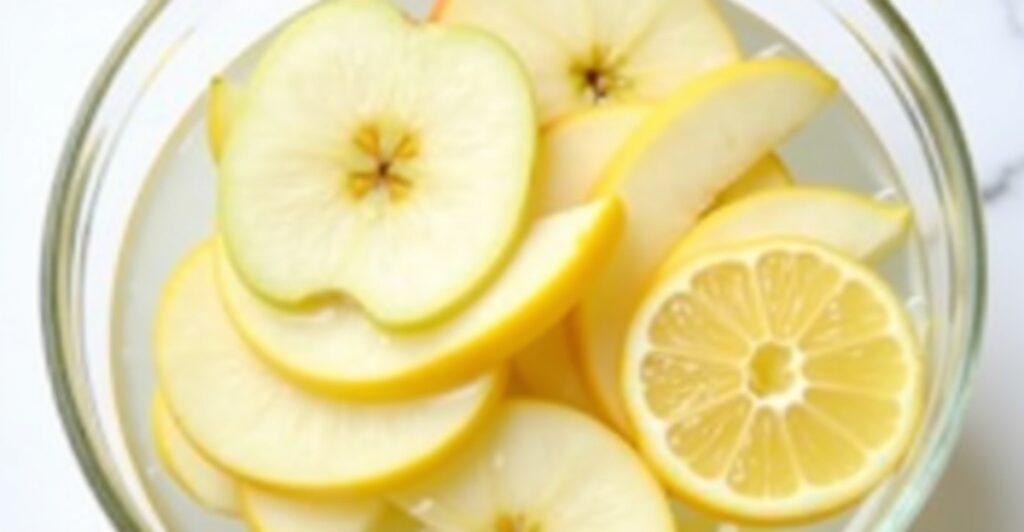
Efficient apple preparation starts with the right tools – a sharp paring knife, apple corer, and vegetable peeler make quick work of large batches. For pies and tarts, aim for uniform slice thickness (about 1/4 inch) to ensure even cooking.
Preventing browning is crucial for attractive results. The most effective method involves acidulated water – combine 1 tablespoon lemon juice with 1 cup cold water and submerge cut apples immediately. This prevents oxidation for several hours without affecting flavor.
Alternative browning prevention methods include:
- Brush cut surfaces directly with lemon juice
- Submerge in cold water with ascorbic acid (Vitamin C) tablets
- Use commercial produce protectors for extended storage
Quick Tip: Always slice apples last when prepping a salad to minimize browning time, and pat dry before using to prevent excess moisture in your final dish.
[Note: This section supports HowTo schema markup for the browning prevention steps]
Exploring Beyond the Usual: Lesser-Known Apple Varieties
Adventure-seeking bakers should explore heritage and specialty varieties like Arkansas Black (intensely flavored, excellent keeper), Esopus Spitzenburg (Thomas Jefferson’s favorite, complex spicy flavor), or Ashmead’s Kernel (russet skin, incredible aromatic qualities). These varieties often appear at farmers‘ markets and specialty orchards, offering unique flavors that can transform familiar recipes into extraordinary experiences.
Frequently Asked Questions About Choosing Apples
[Note: This section supports FAQPage schema markup]
Q: What’s the difference between Fuji and Gala apples?
A: Fuji apples are significantly sweeter with dense, very crisp texture and floral notes, while Gala apples offer milder sweetness with a more tender, less intense crunch. Fuji works better for fresh eating when you want maximum sweetness, while Gala’s gentler flavor makes it more versatile for cooking and appeals to children.
Q: Are Honeycrisp apples good for pie?
A: Honeycrisp can work in pies but performs better when mixed with tarter varieties like Granny Smith. Its sweetness can make pies overly sweet, and while it holds shape reasonably well, it doesn’t provide the structural integrity of traditional pie apples like Granny Smith or Northern Spy.
Q: What are the sweetest apple varieties?
A: Fuji, Gala, and Red Delicious rank among the sweetest varieties, with Fuji being exceptionally sweet with minimal tartness. Golden Delicious also offers reliable sweetness with just enough acidity to prevent cloying taste.
Q: What apples are best for applesauce?
A: McIntosh, Cortland, and Empire excel for applesauce because they break down easily during cooking, requiring minimal effort to achieve smooth consistency. These varieties also offer good flavor that intensifies when cooked.
Q: Do Pink Lady apples bake well?
A: Yes, Pink Lady apples are excellent for baking due to their firm texture and tart-sweet flavor balance. They hold their shape well in pies and tarts while providing complex flavor that doesn’t become overly sweet when cooked.
Q: Why is my apple pie filling watery?
A: Watery pie filling usually results from using high-moisture apple varieties or insufficient thickening agents. Choose firmer varieties like Granny Smith, and ensure adequate thickener (flour, cornstarch, or tapioca) for your apple quantity. Learn more solutions in Troubleshooting: Why Is My Apple Pie Filling Watery?.
Conclusion
Mastering apple selection transforms your baking and cooking from guesswork into confident, predictable success. Remember the three key factors: match flavor profiles to your taste preferences, choose textures appropriate for your cooking method, and understand how different varieties behave when heated. Whether you’re crafting the perfect pie with firm Granny Smiths, creating silky applesauce with tender McIntosh, or enjoying the explosive crunch of fresh Honeycrisp, the right apple variety makes all the difference.
What’s your go-to apple for baking? Share your favorites in the comments below! Ready to put your knowledge to the test? Try our techniques with a classic recipe, and explore more apple recipe inspiration on The Ultimate Guide to Baking with Apples!
Author Bio: By the AppleRecipes.us team, passionate home bakers and recipe developers with over 10 years of experience curating and testing apple recipes. Our team is dedicated to sharing expert culinary insights and helping you create delicious apple dishes every time.